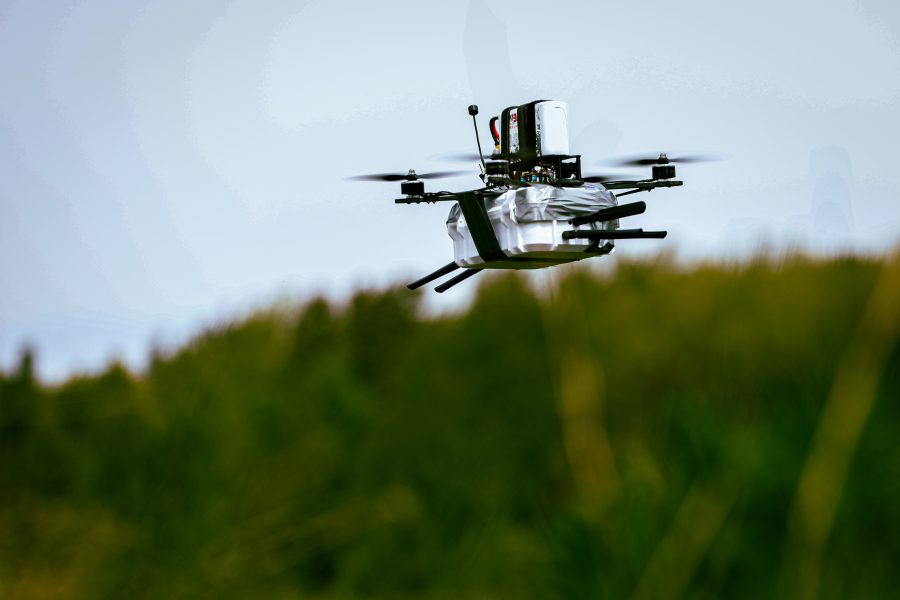Ukraine’s audacious drone attack June 1, which appears to have destroyed several Russian strategic bombers—some based thousands of miles from the war’s front line—posed a dramatic backdrop for a major defense innovation forum in Washington this week, underscoring the ways in which the rapidly developing capabilities of autonomous weapons are revolutionizing the battlefield.
The attack should make the Air Force think about balancing its force design between high-end platforms with “exquisite” capabilities and cheaper, attritable platforms like the one-way drones Ukraine employed, Air Force Chief of Staff Gen. David W. Allvin told the fourth annual Exchange on Innovation and National Security June 2.
The Exchange celebrates the legacy of the 25th U.S. Defense Secretary Ashton Carter, a physicist who is credited with recognizing the urgent need for the Department of Defense to embrace and integrate emerging technologies. It’s now part of the AI+ Expo, organized by the Special Competitive Studies Project.
“Not every part of our Air Force has to be the high air dominance exquisite [force],” Allvin said. “We need that because we always need to be able to penetrate high air defenses.” But he added that “disruptive effects” could be more effective depending on their location.
“When we say ‘air power, anytime, anywhere,’ it doesn’t have to be the most exquisite, exclusive, expensive, sophisticated player,” he said. “It just needs to be able to generate effects for the commander and for the president.”
Diversifying the fleet would help the Air Force avoid “breaking the bank on day one of the fight,” Allvin added.
Allvin said he is also seeking balance in human-machine teaming: “The human-machine team that can make smart decisions faster is the one that can put the adversary … on the back foot,” he said.
Ukraine remotely controlled the 117 drones used in its attack through the cellular network and allowed them to fly autonomously as well, according to Ukrainian military blogs.
First-person-view drones adapted for military use are the center of a new initiative announced at the Exchange by the Defense Innovation Unit (DIU). Originally founded a decade ago by Ash Carter as an embassy for the Defense Department in Silicon Valley, DIU has grown into a billion-dollar annual acquisition powerhouse and the centerpiece of an ecosystem of more than 270 innovation organizations across the DOD.
Project G.I. is a $20 million challenge grant designed to integrate the latest technology in three areas: uncrewed aerial systems (UAS), electronic warfare (EW), and uncrewed ground vehicles (UGV), DIU Director Doug Beck said.
The project seeks commercially sold drones that small tactical units can use when their communications are being jammed or they are in isolated areas with spotty connectivity.
Project G.I. uses funding that’s more flexible than that of typical defense development projects, allowing DIU “to go all the way from idea to initial fielding with an operational unit,” Beck said.
DOD appropriations can normally be used for only one purpose within accounts like research and development, procurement, or operations and maintenance. But Congress gave DIU $220 million to spend without guardrails, which has allowed the organization to field new tools years faster with rapid testing.
It “totally unlocks things and allows us to partner in a completely different way with the [military] services,” Beck said.


